Sagan and Mt. Baldy will be back for 2017 Tour of California
US race unveils host cities for first WorldTour edition
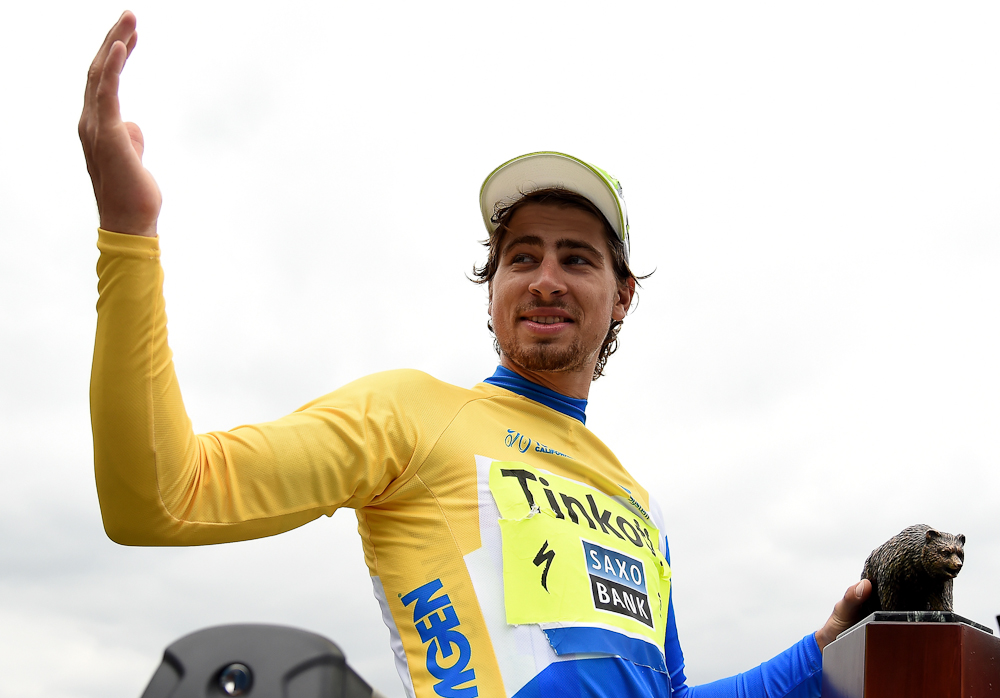
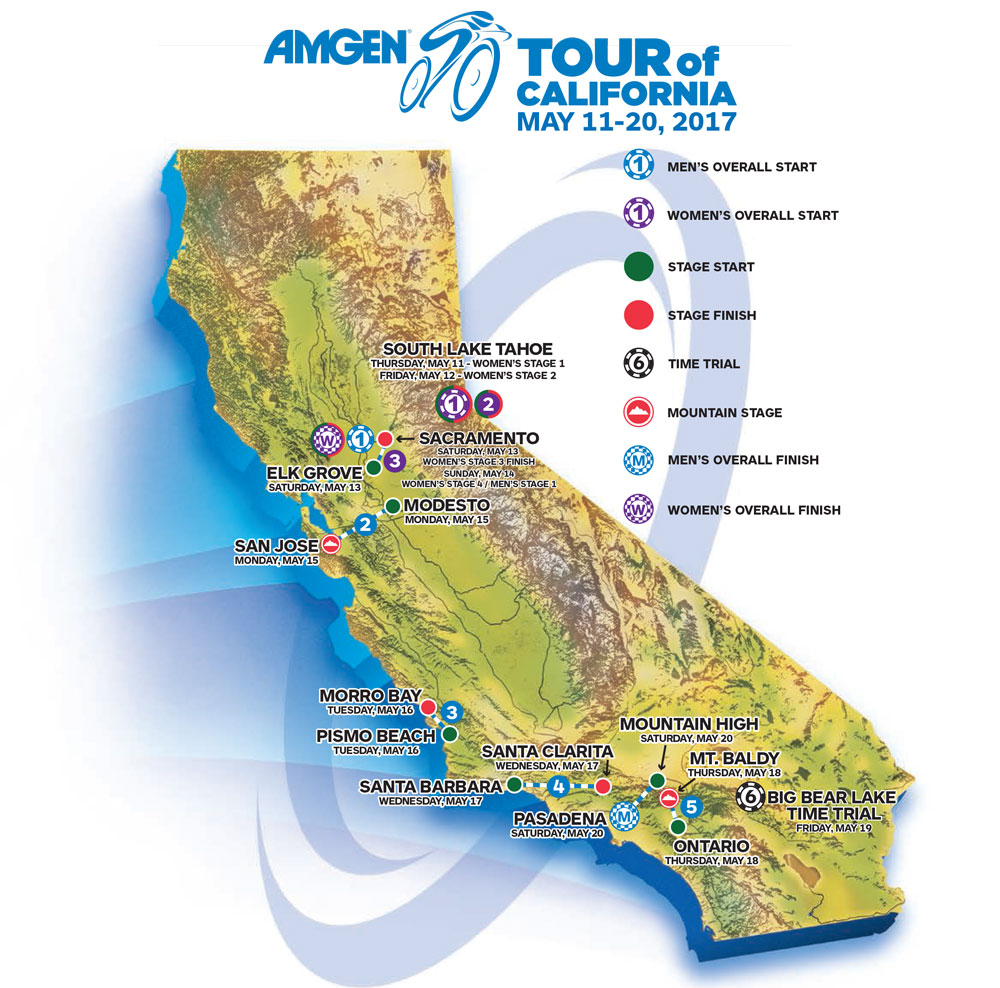
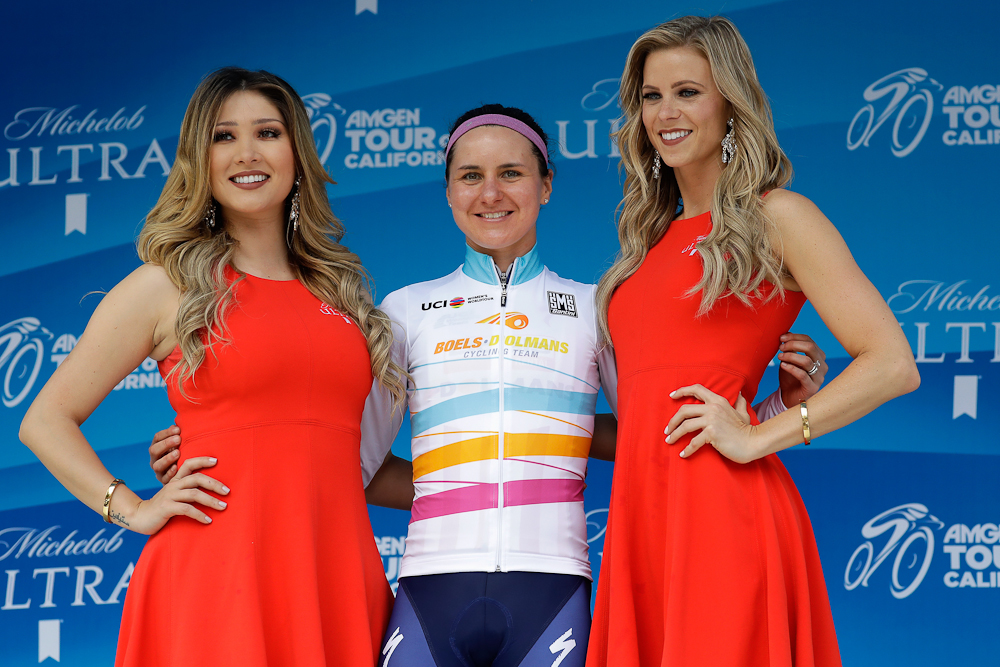
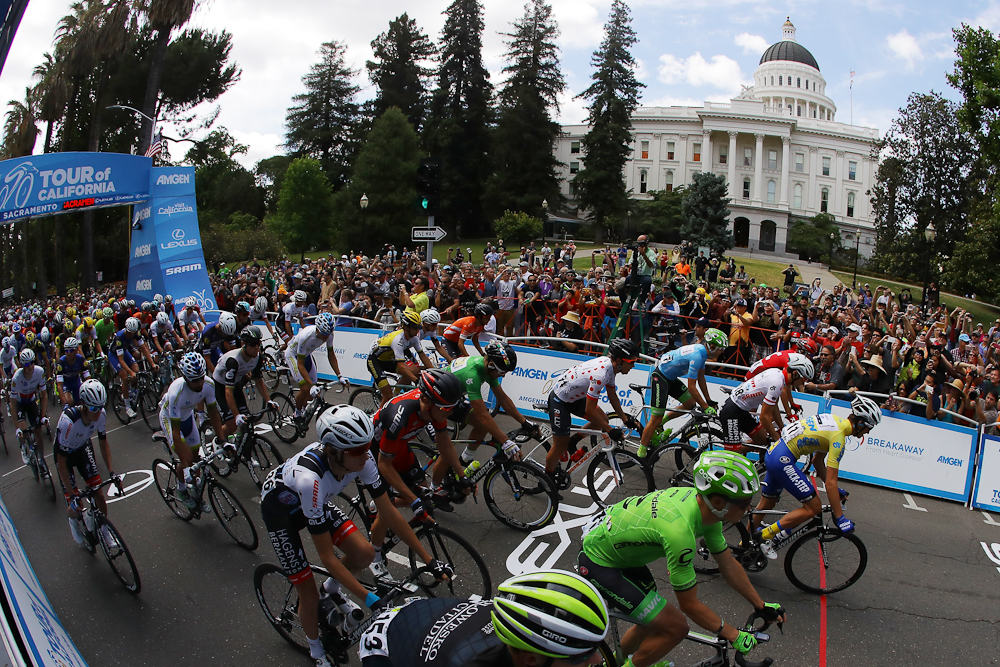
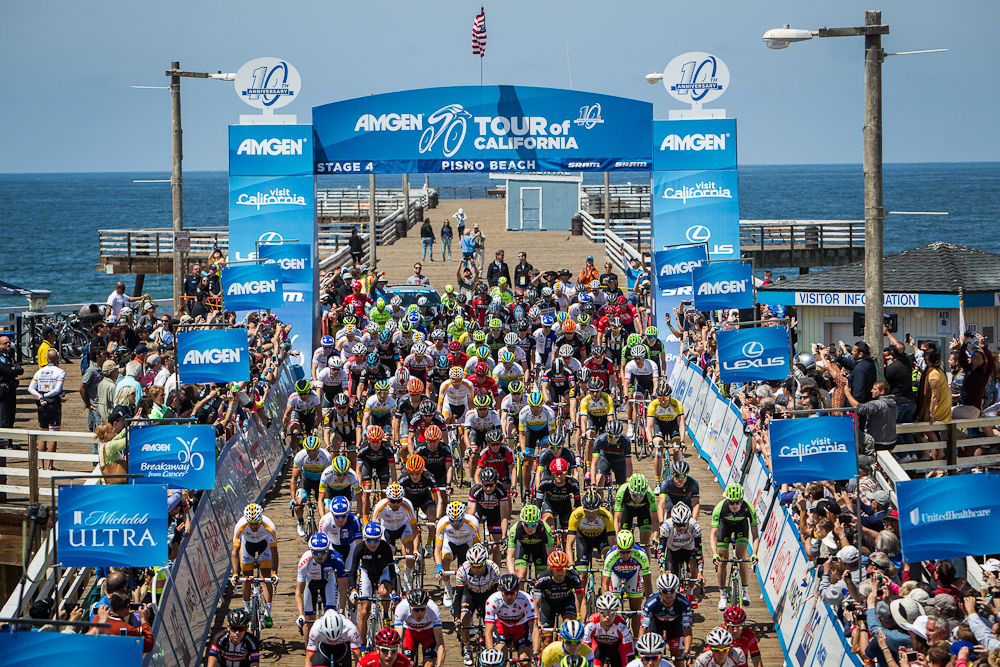
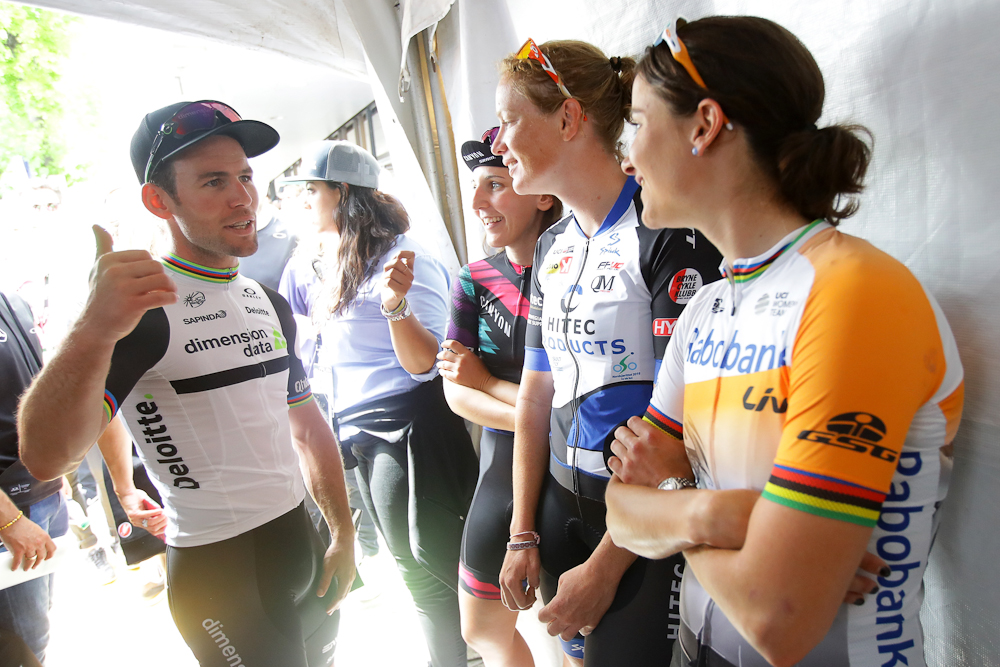
Peter Sagan will return to the Amgen Tour of California for its first WorldTour edition in 2017, and so will the climb up Mt. Baldy, where in 2015 Sagan kept his hopes for the overall win alive with a hard-fought top-10 stage finish.
Race organisers today announced the 12 cities that will host stages for the seven-day race, with Sacramento getting the overall start on May 14 and Pasadena bringing up the finish on May 20. In between, the race will visit Modesto, San Jose, Pismo Beach, Morro Bay, Santa Barbara, Santa Clarita, Ontario, Mt. Baldy, Big Bear Lake and Mountain High.
The four-day women's WorldTour race from May 11-14 will start three days before the men in South Lake Tahoe. After two stages in the Tahoe area, the women will head to Elk Grove for the start of stage 3, which finishes in Sacramento. The race will conclude with a circuit race in Sacramento on the opening day of the men's race.
What will the first Tour of California WorldTour race bring?
No Tour of California would be complete without Peter Sagan, who won the overall in 2015 and holds the record of 15 stage wins. The the two-time and reigning World Champion will move to Bora-Hansgrohe in 2017 but has already said he'll return to California next year.
"Racing in the Amgen Tour of California is always one of my top priorities every year," Sagan said in a statement released by the race. "While spectacular to watch from a scenic standpoint, the route is consistently tough and challenging and one that brings out the best in all of the riders. The incredible fans and all of the cities of California that we get to visit truly makes the Amgen Tour of California one of the best experiences of the year for me."
Sagan will find another challenging course next year, with Baldy's return on stage 5, a time trial at elevation the following day in Big Bear Lake, and an early test on stage 2 from Modesto to San Jose. Those three stages look most likely to decide the overall, while Sagan and the rest of the fastmen will get a chance to add to their stage win tallies during the intervening days.
The latest race content, interviews, features, reviews and expert buying guides, direct to your inbox!
Although the general route has been announced, less certain is what the start list will look like for the race's first year on the UCI's WorldTour calendar.
Tour of California was one of 10 races to be promoted to WorldTour level for the 2017 season. At present, WorldTour teams are not obliged to ride all of the new WorldTour races and organisers are only required to invite 10 teams – although these details will be up for debate when the UCI's Professional Cycling Council meets next Tuesday.
The US Continental teams are hoping to fill some of the remaining spots not taken by the WorldTour teams, a practice that has been a staple of US domestic team's calendars in the past when the race was ranked 2.HC. There was talk this summer of the UCI making a possible exception for the Tour of California that would allow the domestic teams in the race, but there has been no official word on this.
Representatives from race owner AEG last week did not respond to Cyclingnews' request from for comment about the changes, but in a statement released with today's host cities announcement, Tour of California President Kristin Klein praised the race's growth.
"The Amgen Tour of California has long been the most esteemed cycling race in America," she said. "Its designation as a UCI WorldTour event will continue to expand its international exposure and attract the best teams and cyclists yet, giving fans even more to cheer about from the streets of California next spring."
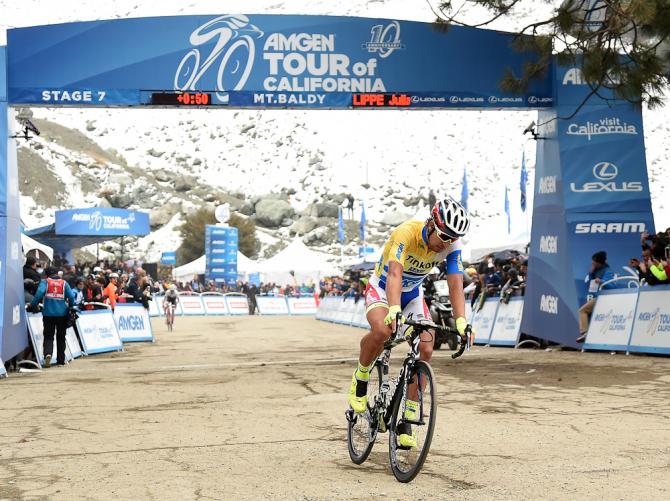
Peter Sagan finishes stage 7 of the 2015 Tour of California on Mt. Baldy. (Getty Images)
An early fight for the women's race
The women's race won't allow any time for riders to get up to speed. With no time trial in this year's race, the general classification will likely be decided in the first two days around Lake Tahoe, when the elevation is higher and the peloton will get a taste of the area's climbing. Veterans to the women's race will be familiar with the loop around the lake and the uphill finish at Heavenly Mountain resort, but organisers say they have some new roads lined up for stage 2 that include summits reaching past 2,225 metres.
With the transfer to the Sacramento suburb of Elk Grove for the start of stage 3, the race route will get considerably flatter, although winds blowing through the agricultural areas around Sacramento could shake things up. The final stage on the Sacramento circuit traditionally produces a bunch finish.
Inaugural Women's WorldTour overall winner and 2016 Amgen Women's Race winner Megan Guarnier will return in 2017 with her Boels-Dolmans team to defend her title. In 2016, Guarnier took the race lead on the first day in South Lake Tahoe, then defended it with her Boels-Dolmans teammates in the stage 2 team time trial and the hilly Santa Rosa circuit. She sealed her win on the Sacramento circuit after Kirsten Wild (Hitec Products) won the final sprint.
"The Amgen Tour of California features a variety of terrains, allowing different types of athletes shine; with the hilly stages and the sprint stages it allows us to demonstrate our breadth of talent within the women's peloton," Guarnier said in a statement released by the race. "I am personally excited to return to the Amgen Tour of California and the rare opportunity to race on home-soil in my current home-State. I always love racing in front of the home-crowd. It energizes me and pushes me to top performances."
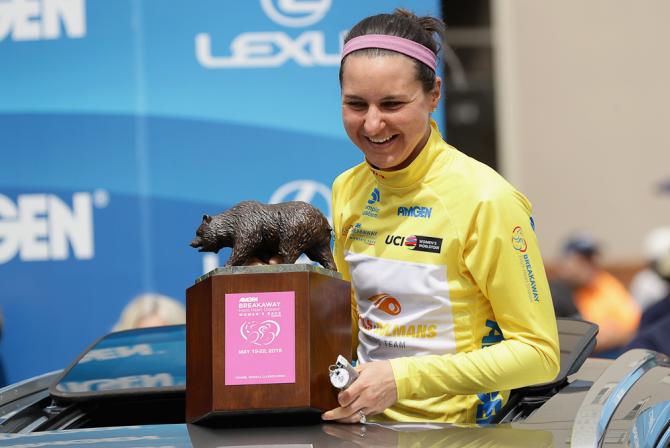
Megan Guarnier with her 2016 Tour of California overall winner's trophy. (Getty Images)
2017 Tour of California, May 14-20
Stage 1 – Sacramento
Sacramento hosted the final stage this year and the opening stages the previous two years. The topography around the state capitol is flat, with fast urban circuits around the capital building setting the stage for the opening-day finish.
Stage 2 – Modesto to San Jose
The last time the Tour of California raced from Modeso to San Jose, Robert Gesink (Rabobank) beat eventual overall winner Levi Leipheimer (Astana) for the stage win, and organisers are promising a difficult mountain stage with six climbs and an uphill finish.
The area offers myriad route opportunities, including a chance to go over Mt. Hamilton. Chris Horner (RadioShack) won a stage on Sierra Road on his way to winning the 2011 race, while Tom Skujins (Hincapie) won a stage outside of San Jose that propelled him into the 2015 race lead for three days.
Stage 3 – Pismo Beach to Morro Bay
Stage 3 hosts Pismo Beach and Morro Bay are coastal towns that sit about 40km apart as the crow flies, but the route will likely head inland before turning back for the first-ever finish in Morro Bay. Organisers say the stage is designed for a crafty sprinter who can handle an uphill sprint to the finish. Sagan will obviously have this day circled on his calendar.
Stage 4 – Santa Barbara to Santa Clarita
Mark Cavendish won the sprint in Santa Clarita the last time the race used this route in 2015. That year, the race headed south down the coast before turning inland toward the finish. The peloton faced a downpour and several climbs, including Balcom Canyon, before the sprinters won the day.
Stage 5 – Ontario to Mt. Baldy
The Tour of California last raced from Ontario to Mt. Baldy in 2015, when Sagan put in a ride up the final climb that kept him close enough to Julian Alaphilippe to seize the overall win the next day with a time bonus in the final sprint in front of the Rose Bowl.
The Baldy finish provides a classic Queen stage that will be a perfect lead-in to Big Bear Lake the next day. The 40km climb to Mt. Baldy should create another GC separation ahead of the individual time trial. In 2015, the peloton climbed Glendora Ridge and Glendora Mountain Road before going to the summit.
Stage 6 – Big Bear Lake Individual Time Trial
The race had hoped to visit Big Bear Lake in 2015 for the stage 6 time trial. Instead, a freak snowstorm forced organisers to move the race to a shortened course in Santa Clarita, where Sagan won the day and took the overall race lead.
Big Bear Lake is back on the list this year, with organisers promising a technical 24km course that will likely look like the planned route for 2015 when stage details are released next year.
Stage 7 – Mountain High to Pasadena
Mountain High hosted a stage finish of the Tour of California in 2014, when Esteban Chaves took the stage win ahead of David de la Cruz (Net App-Endura) and Tom Danielson (Garmin-Sharp). This stage will be a mostly downhill run to the finish in Pasadena, but opportunists will have two climbs that top out over 2,400 metres to shake the sprinters. When the race finished in Pasadena in 2015, the Rose Bowl set the scene for the final circuits.
2017 Amgen Breakaway From Heart Disease Women's Race Empowered with SRAM, May 11-14
Stage 1 – South Lake Tahoe
The opening stage of the 2017 route will reprise the loop around the lake with a finish at Heavenly Mountain Resort. The traditional uphill climb to the finish should separate the leaders enough to set the pecking order for stage 2.
Stage 2 – South Lake Tahoe
The second stage starts and finishes at Heavenly Mountain Resort, but organisers are promising a brand new stage for the women with summits reaching past 2,225 metres of elevation. The climbers will want to get a big advantage before the race heads back to the resort for the finish.
Stage 3 – Elk Grove to Sacramento
This stage starts in first-time host city Elk Grove and heads into the flat-but-oftentimes-windy "Delta Region" before the finish in Sacramento on a circuit in front of the Capitol Building.
Stage 4 - Sacramento
Once again, the women will finish with a criterium-style race on an urban circuit in front of the Capitol Building in Sacramento. The women race on the same circuit where the men will finish their opening stage later in the day. Kirsten Wild (Hitec Products) won this stage in 2016.
Growing up in Missoula, Montana, Pat competed in his first bike race in 1985 at Flathead Lake. He studied English and journalism at the University of Oregon and has covered North American cycling extensively since 2009, as well as racing and teams in Europe and South America. Pat currently lives in the US outside of Portland, Oregon, with his imaginary dog Rusty.